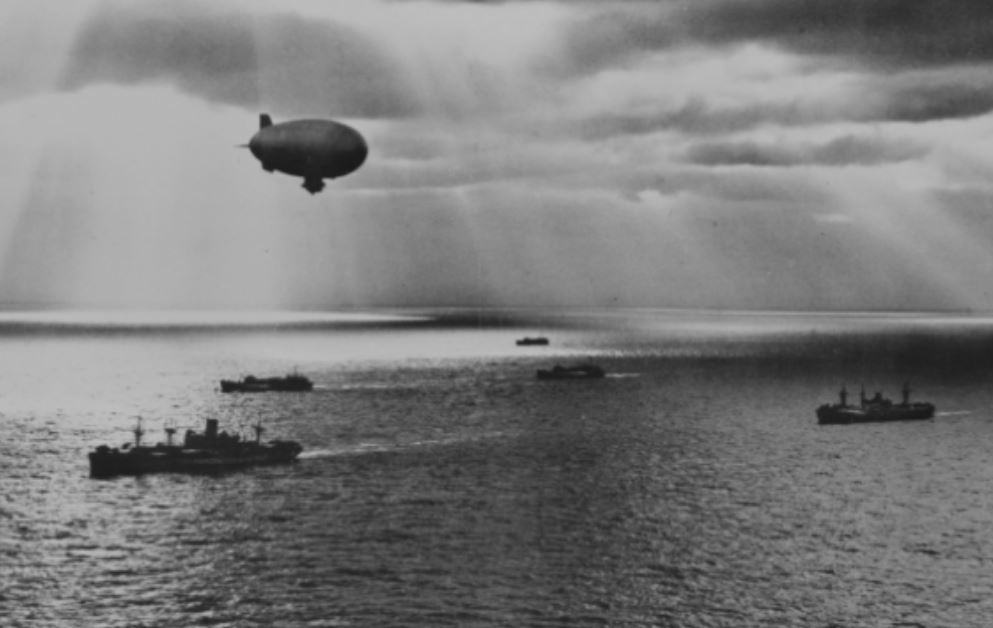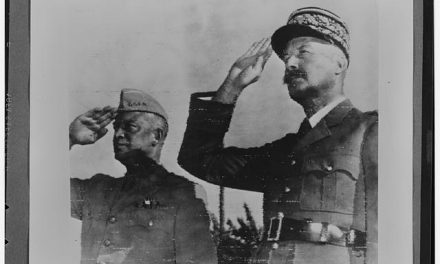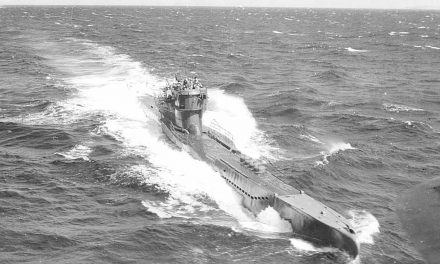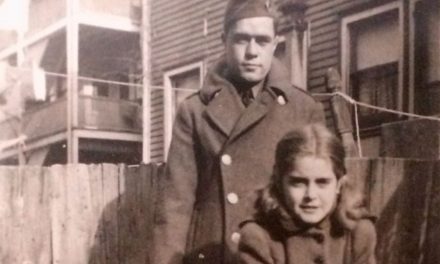At first sight, a balloon may not seem all that intimidating to a Nazi soldier. But these inflatables are causing a great deal of damage in German-controlled territories.
Operation Outward is a plan set in motion by the British that will see nearly 100,000 free-flying, hydrogen-filled balloons make their way across the English Channel to parts of Nazi-ruled Europe. The British are using two types of balloons for. Some carry incendiary devices that are meant to start fires in forests and farmlands, while others will be trailed by long steel wires that can short-circuit high-voltage power lines. The British are using beer, socks and combustible jellies to create their fire-starting devices.
Already, the cheap method of attack has worked to the Brits’ advantage, as reports of power outages and forest fires were confirmed just days after the operation began. The latex rubber balloons cost 35 shillings apiece to make.
The idea to use balloons comes from the Japanese, who have been using fire balloons throughout the global conflict at hand. Fire balloons, or “Fu go,” are filled with hydrogen and loaded with incendiary bombs. The British are going with cruder, but still effective, methods.
The British balloons fly at a lower altitude and shorter distance than the Japanese ones, which have targeted the continental United States and Canada.
So far, Britain’s Women’s Royal Naval Services has played a major part in Operation Outward, overseeing the launching of balloons. The operation is also being handled by the RAF Balloon Command, the Royal Navy and Royal Marine.
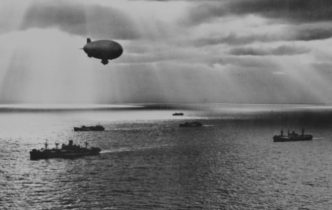
A U.S. Navy blimp flying over a convoy of Allied ships, on the lookout for enemy submarines. From Library of Congress.
Balloons are not the only inflatable being used by the Allies. Both the United States and British are using dirigibles, or frameless air-ships, to their advantage. This includes blimps, which have proved to be an essential alternative to warships when it comes to getting past German submarines.
In addition, the United States has introduced the use of rigid airships – larger blimp-like aircrafts with a frame. Airships serve many purposes, including transporting and recovering planes and serving as safety scouts. Again, the airships also are a way with dealing with German U-boats, as the other option for carrying planes are sea-based aircraft carriers.
“The valuable feature possessed by the large airship of readily launching and recovering airplanes in flight – each of those operations having been performed more than 3,000 times by our naval personnel – by day, by night, in smooth weather and rough, represents one of the most valuable contributions yet made to the world aeronautics by the United States,” said Captain Charles E. Rosendahl of the U.S. Navy. “Its obvious naval application makes of the airship a high-speed, long-range carrier of naval airplanes. It startles many to learn that this operation of planes to learn that this operation of planes to and from the parent airship is accompanied with greater facility than the corresponding operations with the surface aircraft carrier.”
The British have yet to implement the use of airships, but Flight, an English publication, said it’s time the country followed America’s lead.
“The British Navy ought to build large airships as scouts for the trade routes across the ocean where they would be out of range of shore-based aeroplanes,” the publication said.
Sources:
“ENEMY WAR REPORTS.” The Manchester Guardian, Mar 10 1942, p. 8. http://search.proquest.com/docview/484964719?accountid=13793.
R. G. PICINICH Jr. “Lighter-than-Air Ships for Defense.” Barron’s, Mar 30 1942, p. 3. http://search.proquest.com/docview/350242149?accountid=13793.

